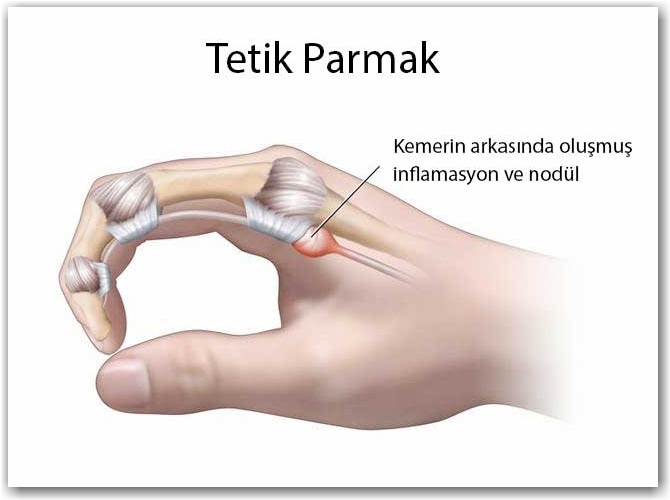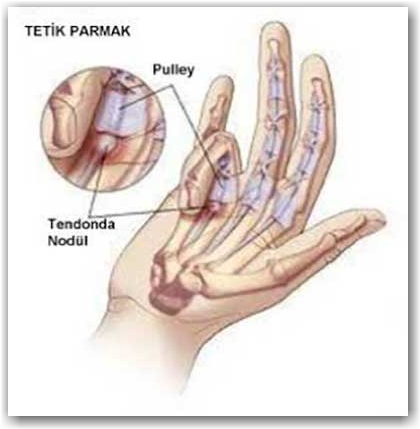
What is Trigger Finger?
Trigger finger is a painful condition, which is characterized by fingers triggering or being locked in a bent position. Because tendons move the fingers, once the tendon sheath in certain parts of the hand would be got inflammation, the movement of the finger gets difficult or is locked.
Tendons are the extensions of the muscles come from forearm and go to the fingers. They have special structures and shapes. These muscles with their tendons allow the bending of the fingers (such as making a fist). Tendons easily slide inside their synovial canal surrounded by slippery synovial membrane, and cause the finger to move. They pass under the arches called pulley in certain regions along the course of tendon. In the trigger finger disease, the swelling, inflammation, and formed nodule of the tendon that come under the pulley obstructs the movement of the finger. Therefore, finger movement becomes difficult and painful. If this condition progresses, the finger is locked in a certain position. When it is forced to move, it presents sudden release like a trigger.
What are the Symptoms of Trigger Finger Condition?
- Trigger finger’s one of the first complaints is pain that starts at the base of the thumb or other fingers.
- A painful triggering and snapping feeling is noticed during movement of the finger (bending and extending).
- In advanced conditions, locking the affected finger in a completely bent position is recorded.
What are the Causes of Trigger Finger Condition?
It may be seen in people who use their fingers in highly demanding tasks. Diseases that cause some changes in tissues such as rheumatoid arthritis, gout or diabetes can also cause such complaints. It can be seen in musicians who use their fingers for a long time. In some cases, there is no reason.
How is Trigger Finger Disease Treated?
Most trigger fingers respond to conservative treatment modalities:
- Elimination of the difficulties that cause complaints is the first stage.
- Anti-inflammatory medications can be used if complaints still carry on.
- It may be tried to inject some local medications to relieve pain and reduce inflammation.
- If the complaints are not relieved using such conservative treatment modalities, surgical treatment may be recommended to release the tendon sheath and restore movement.
Trigger finger surgery is usually an out-patient operation. The finger movements come to normal immediately after surgery and the patients can begin to use their fingers painless after 12-24 hours. Stitches are taken after 12-14 days. Postoperative physical therapy is usually not necessary. Heavy work and compelling movements are not recommended for 4-6 weeks.
Prof. Dr. Eftal Gudemez
Orthopedics and Traumatology
Hand Surgery and Microsurgery
